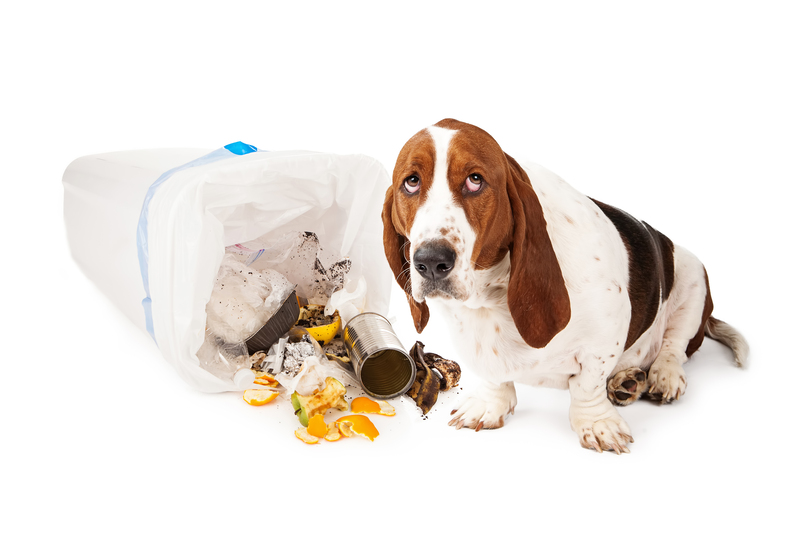Checklist for Environmentally Friendly Cookware Disposal
Are you ready to part ways with your old pots, pans, and kitchenware, but wondering how to minimize your environmental impact? Disposing of cookware in an eco-friendly way is crucial for reducing trash in landfills, protecting natural resources, and supporting sustainability efforts. In this in-depth guide, you'll discover a complete checklist for environmentally friendly cookware disposal, including recycling, donating, repurposing, and more. Use these tips to manage your kitchen clear-out with confidence and care for the planet.
Why Responsible Cookware Disposal Matters
Across the globe, millions of cookware items are discarded annually--many ending up in landfills. Non-biodegradable materials, such as metal, Teflon, and silicone, can take centuries to decompose. Improper cookware disposal contributes to resource depletion and soil contamination, while also missing out on opportunities for recycling or reuse that reduce environmental harm.
Choosing an environmentally conscious approach isn't just about keeping your home clutter-free. It's about making sustainable choices every day, including how you dispose of unwanted kitchenware.
Understanding the Environmental Impact of Cookware
- Metal cookware (stainless steel, aluminum, cast iron) can often be recycled but may require special handling.
- Nonstick pans made with Teflon (PTFE) are typically not biodegradable and might release toxins if incinerated.
- Ceramic, glass, and silicone cookware have unique disposal considerations due to their chemical and physical properties.
- Plastic handles and accessories in cookware add complications to the recycling process.

Ultimate Checklist for Environmentally Friendly Cookware Disposal
Use the following eco-friendly cookware disposal checklist to responsibly manage your unwanted kitchen gear from start to finish.
1. Conduct a Cookware Inventory
- Sort your cookware: Group items by material (metal, nonstick, ceramic, glass, silicone).
- Inspect the condition: Set aside still-usable cookware for donation or resale.
- Research brands: Some cookware manufacturers offer recycling or take-back programs.
2. Clean and Prepare Your Cookware
- Wash thoroughly: Remove any food debris, grease, and grime to ensure cookware is suitable for donation, recycling, or upcycling.
- Disassemble if possible: Remove plastic or rubber handles, lids, or knobs, as these may require separate disposal.
3. Explore Reuse Opportunities
- Donate: Offer usable cookware to local charities, thrift stores, shelters, or food banks. Ensure items are safe and clean.
- Sell: List gently-used pots and pans online via Facebook Marketplace, Craigslist, eBay, or Nextdoor.
- Give away: Host a kitchenware swap or give extras to friends, family, or new neighbors.
4. Research Your Recycling Options
Not all cookware is suitable for curbside recycling--many recycling centers have special requirements:- Contact your local recycling facility: Ask if they accept the type of metal, ceramic, glass, or silicone cookware you have. Bring cookware to a designated drop-off location if accepted.
- Scrap metal yards: Most metal cookware can be recycled as scrap metal if handles and non-metal components are removed.
- Specialty recycling programs: Brands like TerraCycle and certain manufacturers may accept select nonstick and specialty cookware by mail.
5. Separate and Dispose of Mixed-Material Cookware
- Remove plastic parts: If handles, lids, or knobs are plastic, try separating them for recycling if local facilities accept them.
- Check for hazardous materials: Nonstick coatings (Teflon/PTFE) or enamel may require special discarding methods--always check municipality guidelines.
- Don't landfill if avoidable: Many materials take centuries to decompose, so explore every recycling or reuse avenue first.
6. Consider Upcycling and Creative Repurposing
Unusable or damaged cookware doesn't have to go to waste. Repurposing offers a fun and environmentally friendly solution:
- Planters: Turn pots and pans into quirky indoor or outdoor plant containers.
- Organizers: Use old colanders for craft storage or utensil holders.
- Bird feeders: Hang old saucepans or skillets in your yard for wildlife use.
- Art projects: Paint or decorate cookware for wall art, clocks, or creative DIY gifts.
7. Proper Disposal of Non-Recyclable Cookware
- If all else fails, contact your local landfill or waste management service for advice on safe disposal of cookware that's non-recyclable.
- Ask about hazardous waste events: Some areas have drop-off days for items containing Teflon or other chemicals, which should never be incinerated in standard trash.
- Minimize frequency: Buy quality cookware in the future to reduce disposal needs long-term.
Types of Cookware and Eco-friendly Disposal Methods
Different cookware materials require unique disposal processes. Here's a breakdown to guide your environmentally friendly kitchenware disposal decisions:
Stainless Steel and Aluminum
- Recyclable at most scrap metal facilities if you remove all non-metal elements.
- Check facilities for minimum weight requirements or special drop-off protocols.
- Donate if still in good condition, as these materials are durable and highly valued.
Cast Iron
- Very recyclable, but also highly sought after for reuse. Vintage pans are popular donations or resale items.
- Consider seasoning and restoring if surface damage is minor.
- Deliver unusable cast iron to scrap yards.
Nonstick (Teflon/PTFE Coated) Cookware
- Do not burn or incinerate: Can release toxic fumes.
- Many facilities will not accept nonstick pans due to their coating; always call ahead.
- Mail-in or manufacturer take-back programs are often the best eco-friendly nonstick cookware disposal options.
Ceramic, Glass, and Enamel Cookware
- Often not curbside recyclable because of different melting points and additives.
- Check with specialty recycling facilities.
- Repurpose creatively as planters or decor if possible.
Silicone Cookware
- Growing interest in silicone recycling, but municipal guidelines vary.
- Contact eco-centers or specialty recyclers for drop-off or mail-in services.
- Re-use for craft projects if not accepted locally.
Bonus Tips for Sustainable Kitchen Habits
Disposing of cookware responsibly is just the first step. To make your kitchen more sustainable:
- Purchase long-lasting cookware: Choose high-quality, repairable items with minimal coatings or add-ons.
- Avoid frequent upgrades: Treat cookware as a long-term investment.
- Consider secondhand: Thrift stores and vintage shops are a treasure trove for affordable, durable cookware.
- Repurpose where possible: Be creative before choosing to throw away or recycle!
Frequently Asked Questions about Eco-Friendly Cookware Disposal
What should I do with damaged pans or pots that can't be donated?
If your cookware is completely unusable, contact a scrap metal recycler (for metal cookware) or your municipal waste facility for guidance. For nonstick pans, look for manufacturer recycling programs or ask about hazardous waste options in your area.
Can I recycle pans with plastic handles?
Most recyclers require that all-plastic handles are removed before accepting metal pans. Separate the parts and dispose of plastics according to local regulations.
Is it safe to put old cookware in the regular trash?
It's best to avoid landfill disposal whenever possible, as many cookware materials are non-biodegradable, and coatings can leach chemicals. Always exhaust reuse and recycling opportunities first.
Are there cookware brands with green disposal programs?
Yes! Brands like Calphalon, GreenPan, and TerraCycle occasionally partner with retailers or offer take-back programs. Check your cookware maker's website or customer service for current info.

Eco-Friendly Cookware Disposal Checklist: Quick Summary
- Sort and categorize your unwanted cookware by material and condition.
- Clean and disassemble before donating, recycling, or repurposing.
- Donate, give away, or sell usable items to minimize waste.
- Contact recycling centers or scrap yards for metal cookware.
- Research specialty recycling for nonstick, silicone, and ceramic items.
- Repurpose damaged or unique cookware as organizers, planters, or crafts.
- Properly dispose of non-recyclable or hazardous items through special waste programs.
Conclusion: Make Every Disposal Decision Count
Responsible cookware disposal for a greener planet means being informed, thoughtful, and proactive. With this checklist for environmentally friendly cookware disposal, you're equipped to clear out your cupboards without piling up landfill waste or adding to environmental damage. Every recycled pot, upcycled pan, or donated skillet helps build a healthier ecosystem for generations to come.
Start today! Rethink your kitchen cleanup and inspire others to join your efforts toward sustainability.
The information in this article is intended as general guidance. For specific recycling and disposal regulations, always consult your local municipality or waste management service.